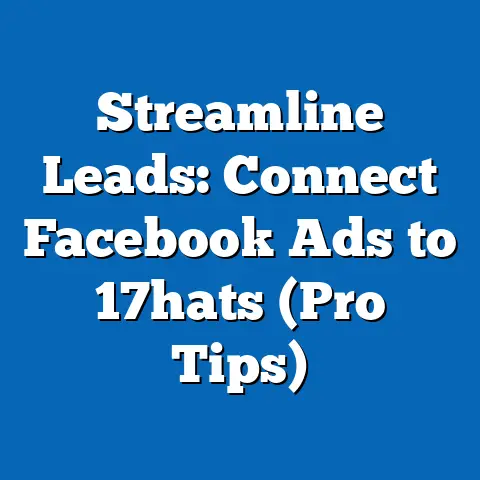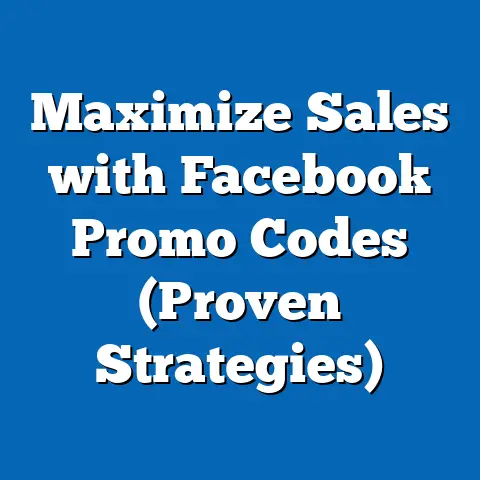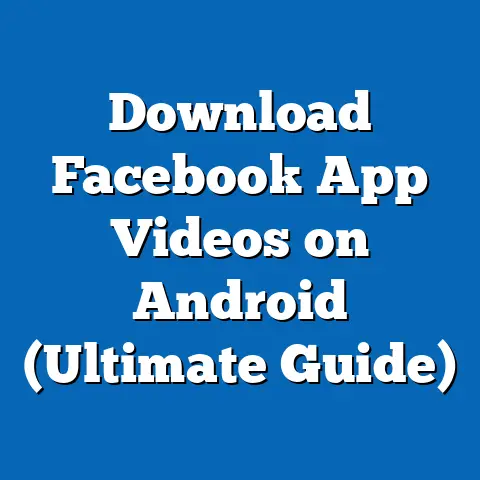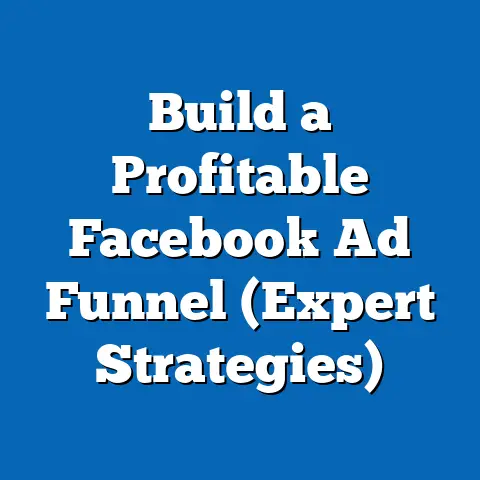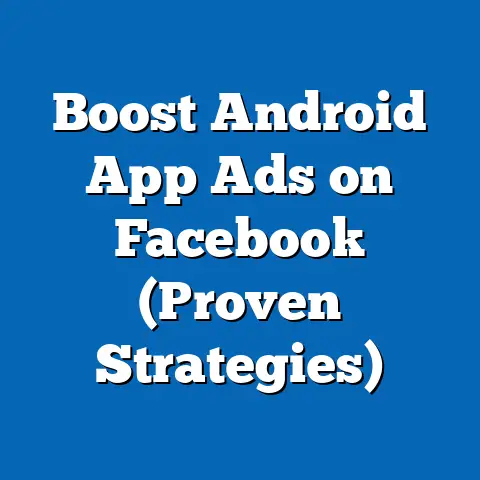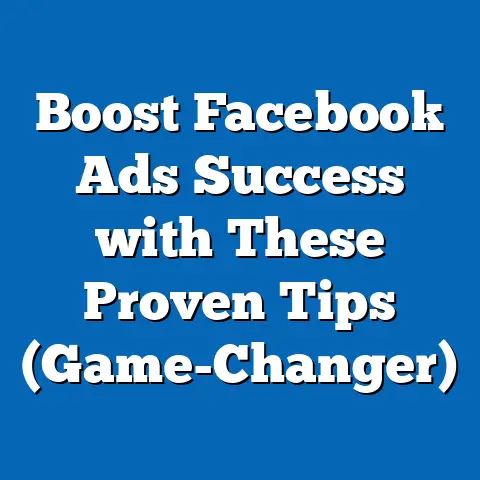Understanding Facebook Ad Breaks (Essential Insights)
In the ever-evolving world of digital advertising, one thing remains constant: the pursuit of “value for money.” Businesses, both big and small, are constantly searching for efficient ways to stretch their advertising budgets and, more importantly, connect meaningfully with their target audience. It’s not just about impressions anymore; it’s about engagement, relevance, and ultimately, conversions. That’s where Facebook Ad Breaks come into play. As an advertiser who’s always looking for the next edge, I’ve seen firsthand how these strategically placed ads within video content can offer a compelling alternative to traditional Facebook ads, providing a potentially lucrative avenue for advertisers looking to boost their ROI. I’m going to walk you through everything you need to know to determine if they’re the right fit for your strategy.
What are Facebook Ad Breaks?
Facebook Ad Breaks are short, video ads inserted into longer-form video content on the platform. Think of them as the digital equivalent of commercial breaks during your favorite TV show. These ads typically run for 5-15 seconds and appear at natural pauses within the video, aiming to capture the viewer’s attention without causing excessive disruption.
The purpose of Ad Breaks is twofold: to provide content creators with a way to monetize their videos and to offer advertisers a new, potentially highly engaged audience. It’s a win-win scenario, at least in theory.
The key difference between traditional Facebook ads and Ad Breaks lies in the viewer experience. Traditional ads often appear in the newsfeed, competing with other content for attention. Ad Breaks, on the other hand, are presented as part of the viewing experience. This can lead to higher engagement rates if the ad is relevant and well-placed.
Not all content is eligible for Ad Breaks. Facebook has specific criteria, focusing on videos that are high-quality, engaging, and appeal to a broad audience. This ensures that the ads are shown within a context that’s likely to be receptive. The audience reach potential is significant, as Facebook boasts billions of active users who consume video content daily. For example, videos about cooking, DIY projects, and even gaming often see a lot of success with ad breaks.
Takeaway: Facebook Ad Breaks are video ads strategically placed within longer-form videos, offering a potentially more engaging advertising experience than traditional newsfeed ads.
The Mechanics of Facebook Ad Breaks
Understanding the technical side of Facebook Ad Breaks is crucial for both content creators and advertisers. From an advertiser’s perspective, the process involves selecting Ad Breaks as a placement option within Facebook Ads Manager. You’ll create your video ad, define your target audience, and set your budget, just like with any other Facebook ad campaign.
However, the magic happens behind the scenes. Facebook’s algorithm analyzes the video content where your ad is being considered. It looks at factors like the video’s topic, the audience demographics, and the natural pauses within the video to determine the optimal placement for your ad. This ensures that your ad is shown to viewers who are likely to be interested in your product or service and that it doesn’t interrupt the flow of the video in a jarring way.
For content creators, the process starts with meeting Facebook’s eligibility requirements. This typically includes having a certain number of followers (usually at least 1,000) and accumulating a specific amount of watch time (e.g., 60,000 minutes viewed in the last 60 days). They also need to comply with Facebook’s monetization policies, which prohibit hate speech, violence, and other inappropriate content.
Once eligible, creators can enable Ad Breaks in their videos. Facebook then handles the ad placement, sharing a portion of the revenue generated with the creator. This revenue-sharing model incentivizes creators to produce high-quality content that attracts a large audience, benefiting both themselves and advertisers.
A critical aspect for advertisers is analyzing performance metrics. Facebook provides detailed data on impressions, reach, engagement, and conversions for Ad Breaks. By tracking these metrics, you can understand how your ads are performing and make adjustments to your targeting, creative, or budget to optimize your ROI.
I once ran a campaign for a local bakery using Ad Breaks. We targeted users interested in food and cooking and saw a significantly higher click-through rate compared to our traditional newsfeed ads. This was because our ad, which showcased the bakery’s delicious pastries, was shown within videos about baking and cooking, making it highly relevant to the viewers.
Takeaway: Facebook’s algorithm plays a crucial role in placing ads within videos, ensuring relevance and minimizing disruption. Advertisers should closely monitor performance metrics to optimize their campaigns.
Financial Implications and Revenue Models
The financial implications of Facebook Ad Breaks are a key consideration for both content creators and advertisers. For creators, Ad Breaks offer a direct way to monetize their content. The revenue-sharing model typically involves Facebook taking a percentage of the ad revenue, with the remaining portion going to the creator. While the exact split can vary, it’s generally around 45% for the creator and 55% for Facebook.
The potential earnings for creators can vary widely depending on factors like the size of their audience, the engagement rate of their videos, and the CPM (cost per mille, or cost per thousand impressions) for the ads shown. Some creators earn a modest income from Ad Breaks, while others generate substantial revenue, making it a viable career path.
For advertisers, Ad Breaks represent an opportunity to reach a highly engaged audience at a potentially lower cost compared to traditional Facebook ads. The CPM for Ad Breaks can be competitive, especially when targeting niche audiences. By carefully analyzing performance metrics and optimizing their campaigns, advertisers can achieve a strong ROI.
Let’s consider a hypothetical example. Suppose an advertiser runs an Ad Break campaign targeting users interested in fitness. They spend $1,000 and generate 100,000 impressions, resulting in a CPM of $10. If the click-through rate is 1% and the conversion rate is 5%, they would generate 50 conversions from the campaign. If each conversion is worth $50 in revenue, the total revenue generated would be $2,500, resulting in a net profit of $1,500.
Ad Breaks can also contribute to a broader revenue strategy for advertisers. By building brand awareness and driving traffic to their website, advertisers can leverage Ad Breaks to generate leads, increase sales, and build customer loyalty. They can also explore partnerships with content creators, sponsoring videos or creating custom content that integrates their brand seamlessly.
Takeaway: Ad Breaks offer a viable revenue stream for content creators and a cost-effective advertising option for businesses. A well-optimized campaign can generate a strong ROI.
Audience Engagement and Content Strategy
The success of Facebook Ad Breaks hinges on creating high-quality, engaging content that keeps viewers hooked. If viewers lose interest and click away, the effectiveness of the Ad Break diminishes. Therefore, content creators need to prioritize creating videos that are informative, entertaining, and relevant to their target audience.
Various content strategies work well with Ad Breaks. Storytelling is a powerful technique, as it captivates viewers and keeps them invested in the narrative. Tutorial videos are also effective, as they provide valuable information that viewers are actively seeking. Entertainment-focused content, such as comedy sketches or music videos, can also attract a large audience and generate high engagement rates.
Integrating Ad Breaks seamlessly into video content is crucial. Avoid placing ads in the middle of a sentence or at awkward pauses. Instead, look for natural breaks in the video, such as scene changes or transitions between topics. Also, ensure that the ad is relevant to the video content. Showing an ad for a cooking product during a cooking tutorial is a natural fit, while showing an ad for car insurance during a comedy sketch might feel out of place.
Analyzing audience feedback is essential for optimizing content and improving engagement. Pay attention to comments, likes, and shares to understand what resonates with your audience. Use this feedback to refine your content strategy and create videos that are more likely to capture viewers’ attention.
I remember working with a client who created DIY home improvement videos. Initially, their Ad Break performance was lackluster. However, after analyzing audience feedback, we realized that viewers were particularly interested in specific tools and materials used in the videos. We then created ads that showcased these products, and the engagement rates skyrocketed.
Takeaway: High-quality, engaging content is essential for maximizing the effectiveness of Ad Breaks. Analyzing audience feedback and adapting content accordingly is crucial for optimizing performance.
Conclusion
Facebook Ad Breaks offer a unique opportunity for advertisers to reach a highly engaged audience within a contextually relevant environment. By understanding the mechanics of Ad Breaks, analyzing the financial implications, and prioritizing audience engagement and content strategy, advertisers can unlock significant value for money.
It’s not just about running ads; it’s about creating a seamless and enjoyable viewing experience that benefits both the advertiser and the viewer. By carefully considering these factors, you can determine whether Facebook Ad Breaks are the right fit for your advertising strategy and achieve optimal results.
So, take the time to explore the potential of Facebook Ad Breaks. Experiment with different content strategies, analyze your results, and refine your approach. With the right strategy, you can leverage Ad Breaks to enhance your advertising effectiveness and achieve your business goals.

